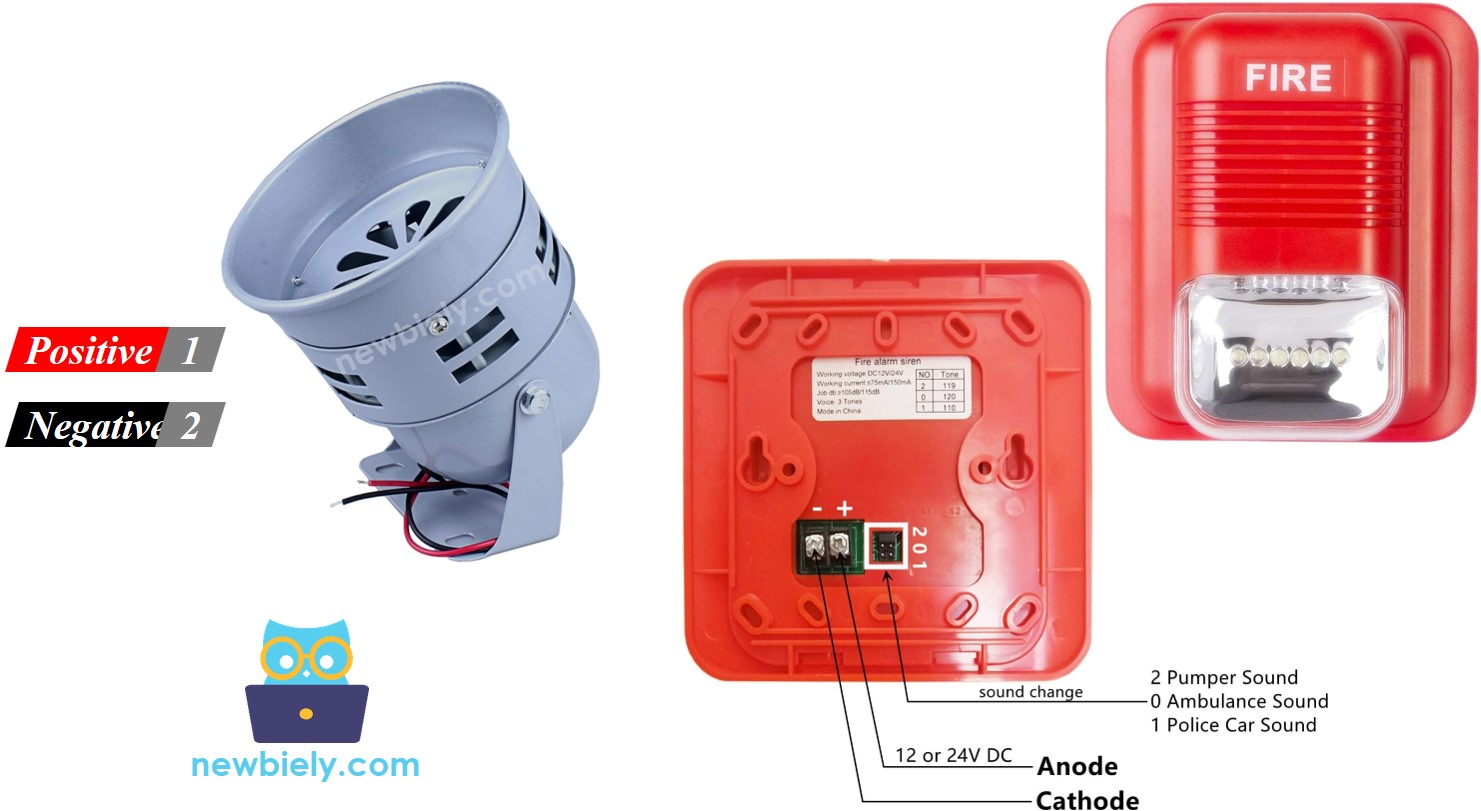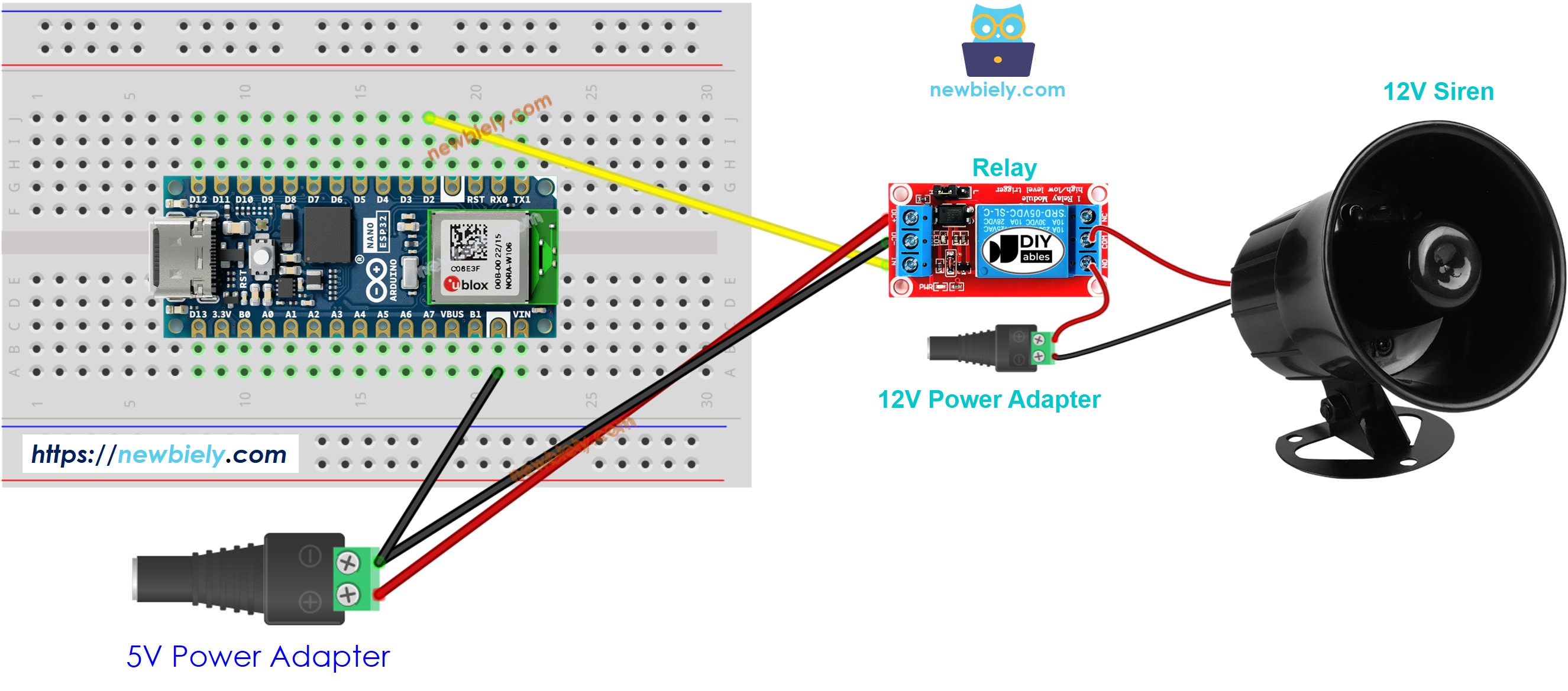Arduino Nano ESP32 - Siren
In this tutorial, we are going to learn how to program Arduino Nano ESP32 to control a siren to produce a warning sound and/or light.
Hardware Preparation
Or you can buy the following kits:
| 1 | × | DIYables Sensor Kit (30 sensors/displays) | |
| 1 | × | DIYables Sensor Kit (18 sensors/displays) |
Additionally, some of these links are for products from our own brand, DIYables .
Overview of Siren
Depending on the manufacturer, a siren can produce either a loud sound or a warning light, making it suitable for an alarm system. It is also available in several operating voltages. This tutorial will use a 12V siren, and other voltages will be similar.
Pinout

12V siren usually has two pins:
- Negative (-) pin (black): needs to be connected to GND of DC power supply
- Positive (+) pin (red): needs to be connected to 12V of DC power supply
How to Control a Siren
If 12V siren is powered by 12V power supply, it make sound and/or warning light. To control a 12V siren, we need to use a relay in between Arduino Nano ESP32 and 12V siren. Arduino Nano ESP32 can control the 12V siren via the relay. If you do not know about relay (pinout, how it works, how to program ...), learn about relay in the Arduino Nano ESP32 - Relay tutorial
Wiring Diagram

This image is created using Fritzing. Click to enlarge image
Arduino Nano ESP32 Code
The below code repeatedly turns the 12V siren ON in three seconds and OFF in five seconds,
Detailed Instructions
- If this is the first time you use Arduino Nano ESP32, see how to setup environment for Arduino Nano ESP32 on Arduino IDE
- Connect Arduino Nano ESP32 to PC via USB cable
- Open Arduino IDE, select the right board and port
- Copy the above code and open with Arduino IDE
- Click Upload button on Arduino IDE to upload code to Arduino Nano ESP32
- Check out the siren's state
Code Explanation
Read the line-by-line explanation in comment lines of code!
